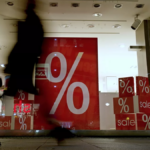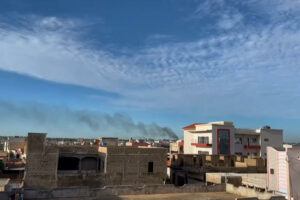The number of migrants and refugees departing from Tunisia and trying to reach Europe has significantly increased in recent months.
European Union leaders and the Tunisian government have signed what they call a “strategic partnership” deal which aims at combating undocumented migration and boosting economic ties between the bloc and the North African country.
On Sunday, European Commission President Ursula von der Leyen, Dutch Prime Minister Mark Rutte, and Italian Prime Minister Giorgia Meloni held renewed talks with Tunisian President Kais Saied.
Tunisia lies on a major route for migrants and refugees travelling to Europe.
The number of migrants and refugees departing from Tunisia and trying to reach Europe has significantly increased in recent months.
What does the deal comprise of?
The EU Commission chief said the bloc would allocate 100 million euros ($112m) to Tunisia to help it combat undocumented migration.
The deal is also said to promote macroeconomic stability, trade and investment, green energy transition and legal immigration.
Von der Leyen said the agreement aims to “invest in shared prosperity”.
“We need an effective cooperation, more than ever” on migration, she said, and against “networks of smugglers and traffickers”.
The aid also includes a 10-million-euro ($11m) programme to boost exchanges of students and 65 million euros ($73m) to modernise schools.
Yasmine Akrimi, a researcher at the Brussels International Center, told Al Jazeera that the EU has been trying to achieve this deal for years and turn North African countries into a “disembark platform”.
“Italy wants to consider Tunisia as what they call a safe third country – meaning that everyone who passes through Tunisia can eventually be relocated back to Tunisia,” she said.

Why has Tunisia agreed to the deal?
Tunisia is struggling with crippling inflation and nearing a major debt crisis.
In June, von der Leyen offered Tunisia 105 million euros ($115m) to curb undocumented migration and 150 million euros ($168m) in immediate support, including a long-term loan of 900 million euros ($1.01bn).
But that loan would be contingent on approving a loan from the International Monetary Fund (IMF).
Talks on the IMF loan have been stalled since October after President Saied rejected terms, including subsidy cuts and a reduction in the public wage bill.
On Sunday, he rejected the IMF demands to lift subsidies on basic products and services and the restructuring of 100 state-owned firms.
How high are migration levels?
According to the European border agency, Frontex, the Central Mediterranean route was the most active migration path into the EU this year, with “nearly 66,000 detections reported by national authorities in the first six months of 2023”.
“This route accounts for one of every two irregular entries into the EU in this year.”
The Central Mediterranean route connects North African countries – including Tunisia, Algeria, Egypt and Libya – to Italy and Malta.
More than 400 migrants and refugees drowned in the Central Mediterranean during the first three months of the year, making it the deadliest quarter since 2017 on the world’s most dangerous migrant crossing, according to the United Nations.
In recent months, thousands of undocumented African migrants and refugees have flocked to the city of Sfax in Tunisia, following Saied claims the rise in sub-saharan African migration was changing Tunisia’s racial makeup.
His comments sparked racist attacks and forced hundreds of migrants and refugees from Sfax to flee as violence rose to dangerous levels.
Source : ALJAZEERA

















Add Comment